Searching for the Soul of Riesling. Reflections on Mosel magic and the wines of St. Urbans-Hof
Wine is nothing without people. It is people who make wine. It is the company of the right people that makes for a great evening with wine. And it is people's stories that make for engaging wine writing. Recently I had the pleasure of meeting a man who not only makes excellent wine but who also talks about it in such an engaging way that there is only my writing to blame if you don't walk away from this article at least a little inspired.

I certainly left inspired after my encounter with Nik Weiss, the owner of the St. Urbans-Hof estate in the Mosel wine region of Germany. It made me think about the magic that happens when you fall in love with a piece of land and the produce you bring forth from it. It is a magic that over thousands of years has transformed the land but it also transforms the people who work it. This is a story about how the Mosel transformed a man and how he in turn set out to transform his part of the Mosel - and about a little magic that happened when I spent an evening with him and his Riesling.
The setting
It was 11 July and Nik Weiss had brought together a group of UK-based sommeliers and wine writers from several European countries to taste, with food, Rieslings from four of his Mosel and Saar vineyards – each represented by the 2011 and 2001 vintages. The tasting was designed to demonstrate the versatility of Riesling for food matching and to show the differences between the vintages as well as the ageability of good Riesling. We started at the Saar valley with the Saarfeilser Marienberg vineyard, represented by a 2001 QbA and a 2011 Spätlese – paired with ravioli of crab, clams, chilli and ginger. Next was the Ockfener Bockstein with two Kabinett wines – paired with seared foie grass with tart tartin of endive and orange.
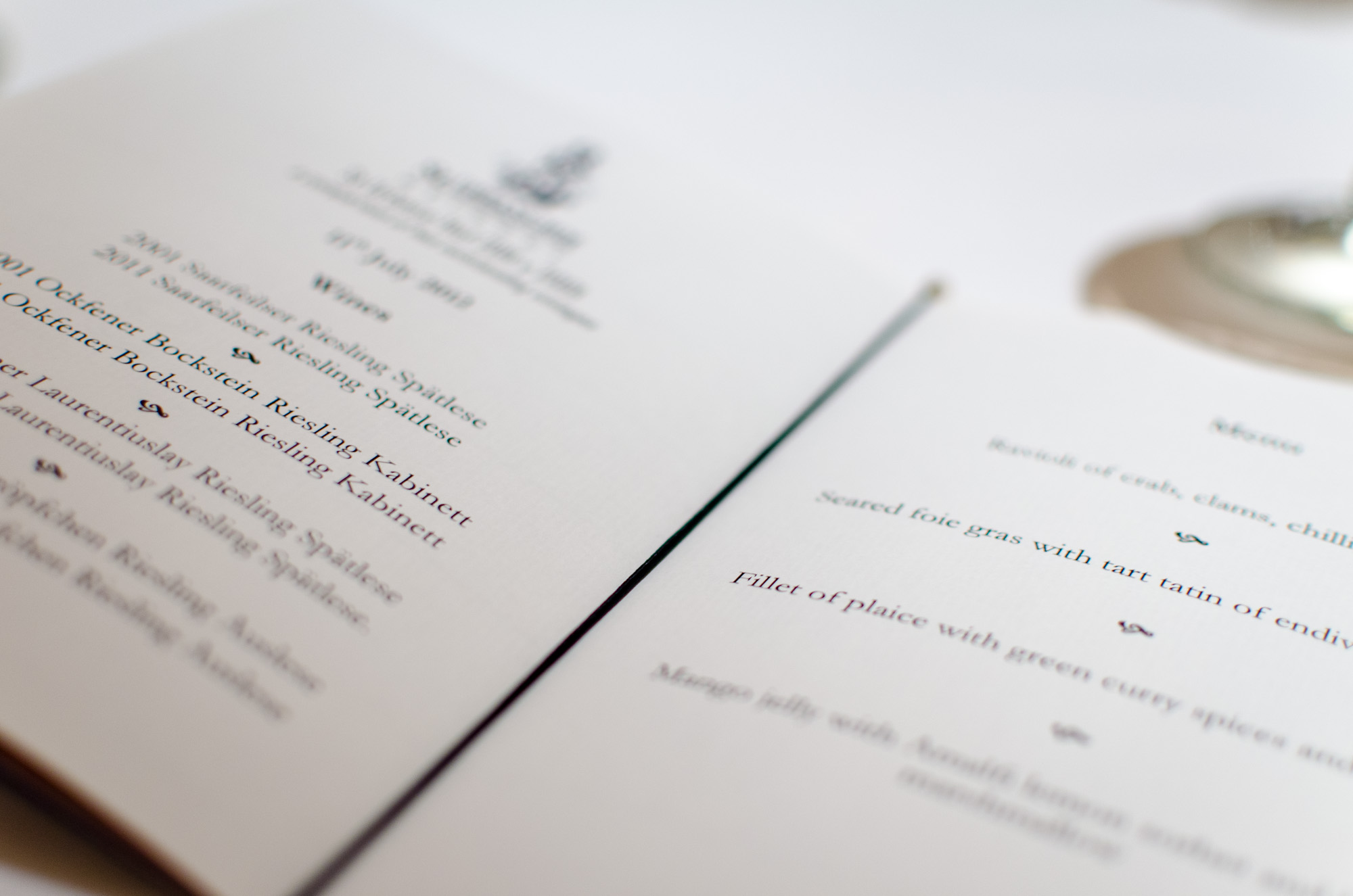
Next we moved to the Mosel, for two late harvests from the Leiwener Laurentiuslay – and fillet of plaice with green curry spices and asparagus. Last, but not least, came the glorious Piesporter Goldtröpfchen that sent us a 2001 and 2011 Auslese – served with mango jelly with Amalfi lemon sorbet and hibiscus marshmallow.
Searching for the Soul of Riesling, part 1
Amongst the classic storytelling techniques is the use of the turning point, a decisive event that sooner or later would turn around someone's life. At first glance one would doubt that there ever was such a moment in the life of Nik Weiss. By birth he was destined to become the third generation owner of a Mosel winery - and that is exactly what happened. The Mosel is famous for a style of wine that blends acidity, character and a touch of sweetness into pure harmony – and this is exactly the style Nik aims for. And yet there was such a turning point in Nik's life, and much like our evening it started with a few bottles of Riesling, a group of wine explorers and a restaurant.
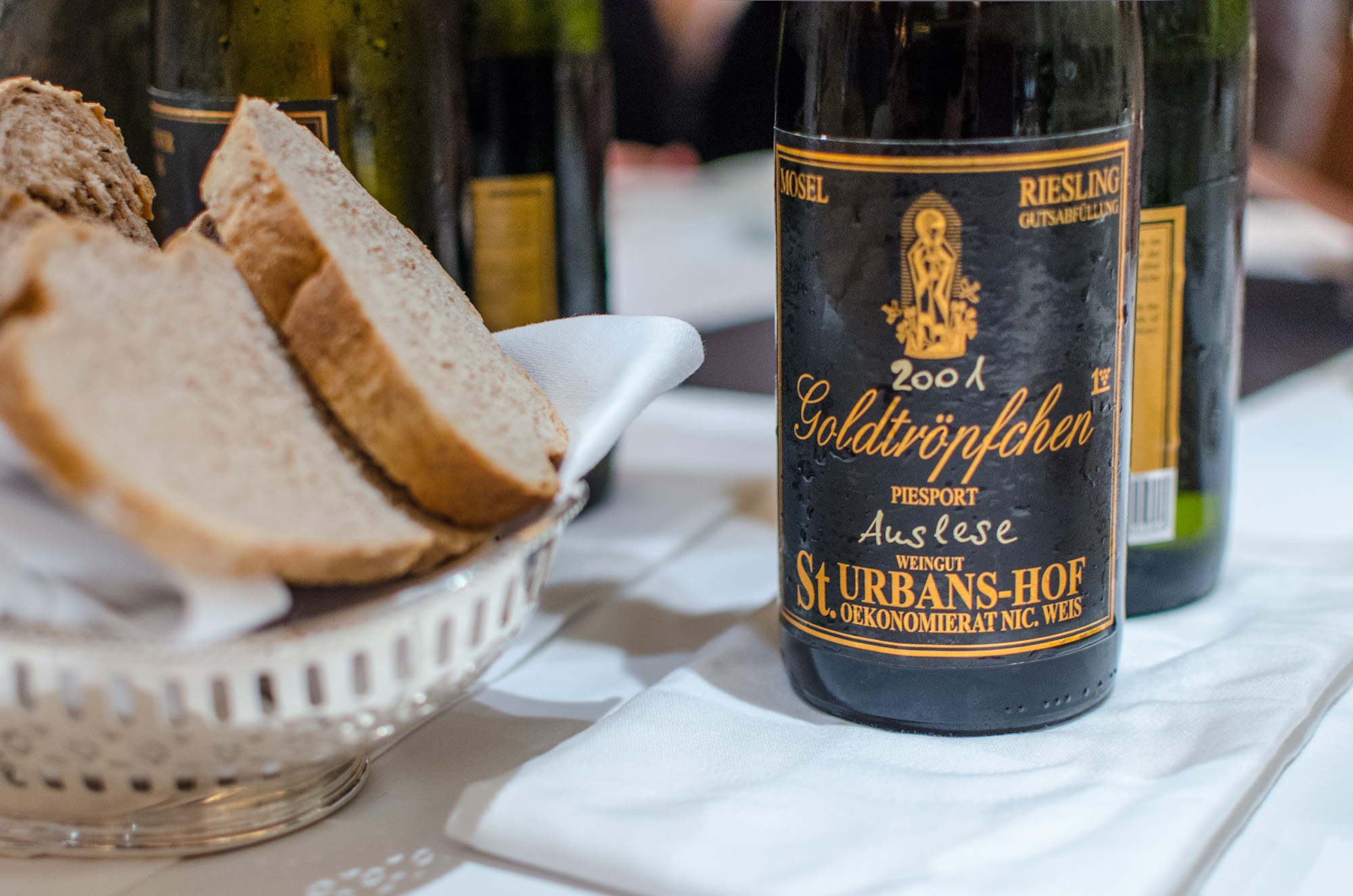
The restaurant is (still) run by Nik's sister, a trained sommelier; young winemaking student Nik Weiss had brought together some of his friends to help her pick Mosel wines to be put on the menu. It was the early 90s and Nik and his friends thought they knew how to make Mosel Riesling: it had to be clean and fermented under controlled circumstances in a stainless steel tank, creating a clearly structured, tidy wine driven by consistent fruit flavours such as apple. As I have explored in recent articles on the role of family in winemaking this was not unusual at the time and I understand this focus on clean precision as the generation of Nik's parents employing a modernist agenda to distinguish their winemaking from their parents'. For the tasting Nik had brought together wines from some of the most prestigious Mosel estates - wines he and his young winemaking friends had never before tried. Even so they thought their mission would be simple: pick the best representatives of a style they knew well.
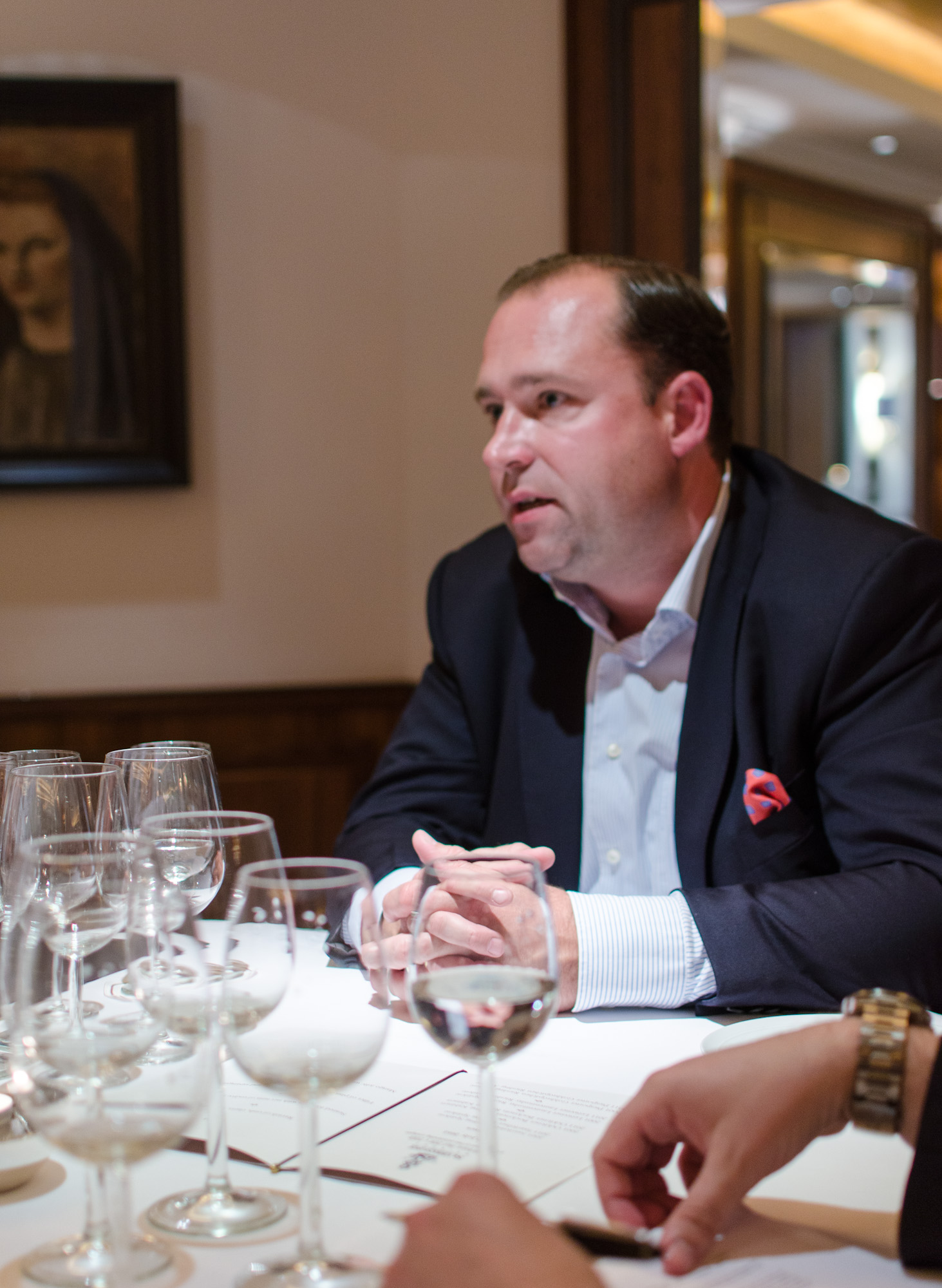
Yet what they found was something very different. All sorts of unexpected flavours and aromas, irritating complexity and certainly no sign of the straightforward, fruit-driven style they considered the pinnacle of achievement. At first they wrote this off as eccentricity of a few individual wines. However, every bottle opened confirmed that they were looking at a pattern. The Mosel Riesling they discovered that night was not "clear", not a "fruit bomb" and not homogeneous. And that made it better. Nik came away with a question that would change his winemaking life: "Why do our wines not taste like that?" That night he decided he would change everything.
Excursus #1: what is in a vintage?
There is no tasting of different vintages without considering vintage variation. If you look at the Mosel you may discover a curious detail: several of the outstanding vintages end on 1: 1921 or 1971 for instance are considered excellent and the reputation of 1911 is not bad either. Listening to Nik talking us through these and other vintages such as 2001 I realised something: the quality of a vintage is determined by comparison with previous vintages. That seems almost too trivial to mention, but it depends who compares and on what criteria. Some great vintages were not necessarily so much better than others in terms of quality, but they had other qualities. For people in winemaking regions criteria such as yield and health of the grapes play an important role too – some of the excitement about the 2011 vintage for instance comes from the fact that after the extremely low yields of 2010 grapes were plenty. In the case of St. Urbans-Hof 2011 gave around 300.000l of wine, which is a little about average, whereas in 2010 there were only 150.000l – an economically difficult situation. Next time someone tries to sell you yet another great vintage maybe ask them what kind of "great" they mean.
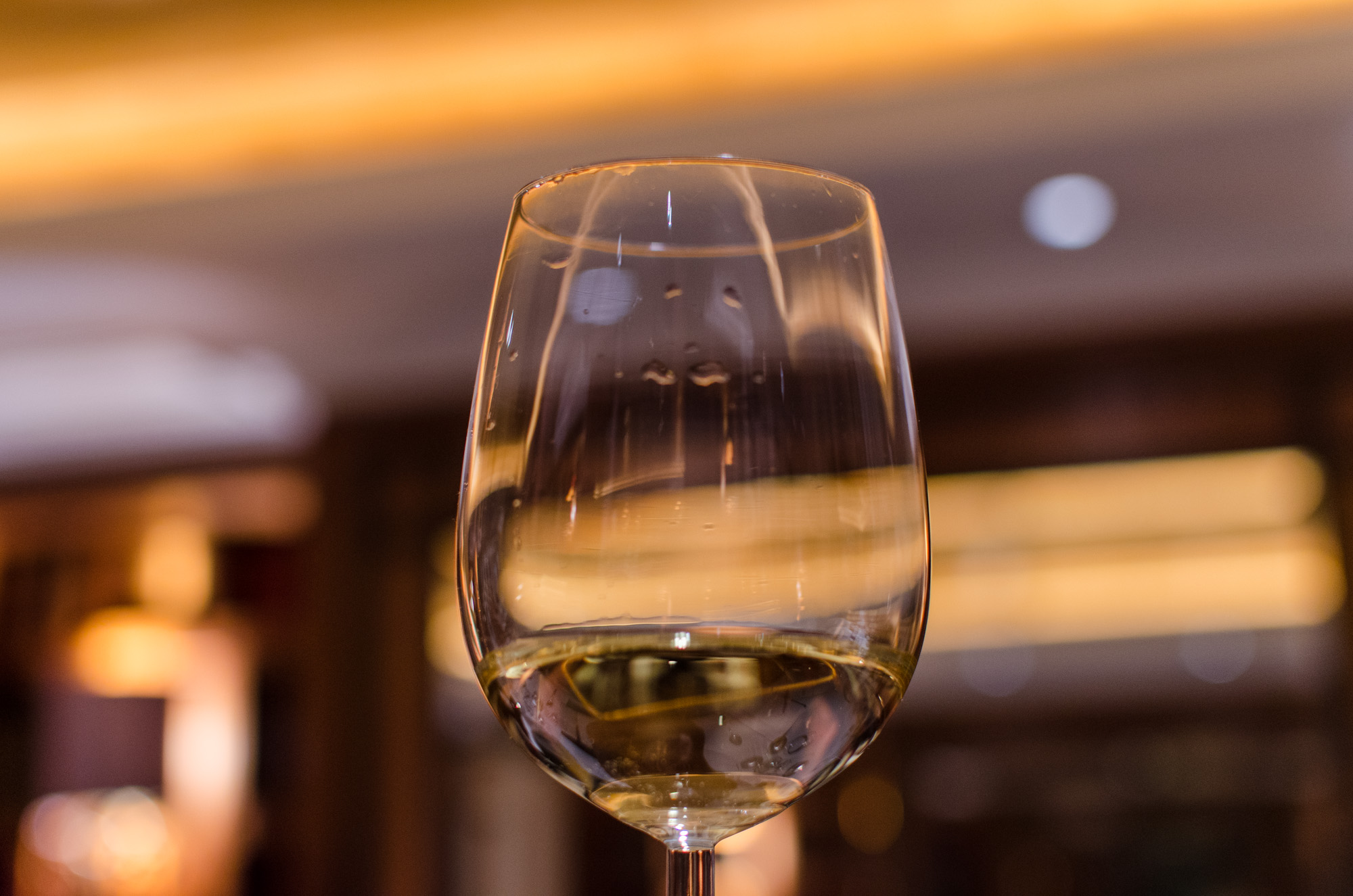
The higher yield of the 2011 vintage makes the wine less dense, but as the grapes were very ripe the wines tend to show more tropical fruit flavours. Because of that and the nicely balanced acidity the 2011 wines are already drinking very easily. The 2001 vintage had relatively high yields and healthy grapes too, which added to its reputation, although Nik feels that other vintages such as 2005 and 2010 were at least as good. What sets 2001 apart from the 2011 is a higher acidity level. This makes these two vintages good candidates for comparative tastings – one already very drinkable in its young age with the other having preserved freshness due to acidity.
Excursus #2: yields and the future of Mosel Kabinett
Allow me to digress again with a comment about yields. General wisdom has it that low yields are the key to good wine, but Nik feels that this is not always true, especially with Mosel Kabinett. These wines are meant to have a fresh lightness that should make them dance rather than run down your throat, which means that at the Mosel yields should not be much lower than 70-80hl/ha lest the wines become too heavy. Recently more and more Kabinett wines are substantial enough to qualify not only as late harvest but even as Auslese, which can make the half-dry wines quite intense and the dry ones strong in alcohol. This has come to the point where complaints are raised that the Mosel should not neglect the lighter, half-dry style of Riesling that makes it unique in the wine world (if you want to know more about this and read German check out a recent article in the Süddeutsche Zeitung).
Searching for the Soul of Riesling, part 2
Back to Nik. Following his graduation in 1997 he returned to the St. Urbans-Hof estate – and set out to change everything. It was not just youthful enthusiasm that drove him beyond making just a few changes. Winemaking is a complex process and changing just one or two components will not necessarily give you the desired results. Take fermentation for instance. Many winemakers prefer artificial yeasts as they give better control over the results and guarantee consistency. Sadly that can also lead to standardised flavours and aromas. As he wanted to make wines that reflect their origin and vintage, Nik went for indigenous yeasts that occur naturally in the vineyard and cellar. However, he soon discovered that this meant he also had to change viticulture. He increased the amount of fertiliser used, but also moved from artificial to natural fertilisation. (mini-excursus: Fertilisers and yeasts impact the wine in several ways: artificial fertilisers and yeasts tend to produce higher acidity levels, whereas indigenous fertilisation increases the pH levels.)

Getting these processes right took years and Nik and his team are still tweaking as they go along. Critical success seems to have proven them right, but it was not a straightforward route to glory. Initially, Nik won a reputation for making wines described as "funky" or even "stinky". It took until 2005 till he felt he had achieved "complex wines that were not stinky". Others noticed this too and Nik even got a complaint from someone who had included St. Urbans-Hof wines in a tasting for their "special" character and was disappointed that they did not appear funky at all. The message you should take away from this is not, however, not to drink older St. Urbans-Hof wines – quite the opposite as they have come out very well. The 2001 Goldtröpfchen for instance is a lovely wine with aromas and flavours such as caramelised pineapple, grapefruit and sherbet. And then there is the Spätlese from the Laurentiuslay with a bouquet so enticing that I had to force my nose out of the glass.
Excursus #3: sugar chains and ageing wine
Wines that are worth ageing for years – and these definitely are – will change over time, and it is not unusual that complex wines go through difficult phases. This is perhaps a good time to bore you with a little chemistry as it relates to the magic of mature Mosel wine. Part of that magic comes down to the polymerisation of sugar chains. Only a relative small amount of wines are suitable for ageing, but sweet Riesling is a prime candidate as the combination of acidity and sugar helps preserve it. It also allows the wine to evolve and refine its character as it matures. Over the years the sugar molecules in wine bond and build longer chains, a process that adds flavours such as liquorice and makes the wine appear less sweet.
The setting, part 2: wine and food matching
The combination of harmony and complexity of mature Mosel Riesling also makes it a great food companion. Take our first starter, the ravioli of crab, clams, chilli and ginger. An obvious pairing for such a fresh dish full of flavour would be a young, fresh wine. However, I preferred it with the 2001 Saarfeilser Riesling, not the younger one. The food really made the wine shine, rejuvenated it, and the combination had a lovely dynamic between sweet freshness, spice and character.
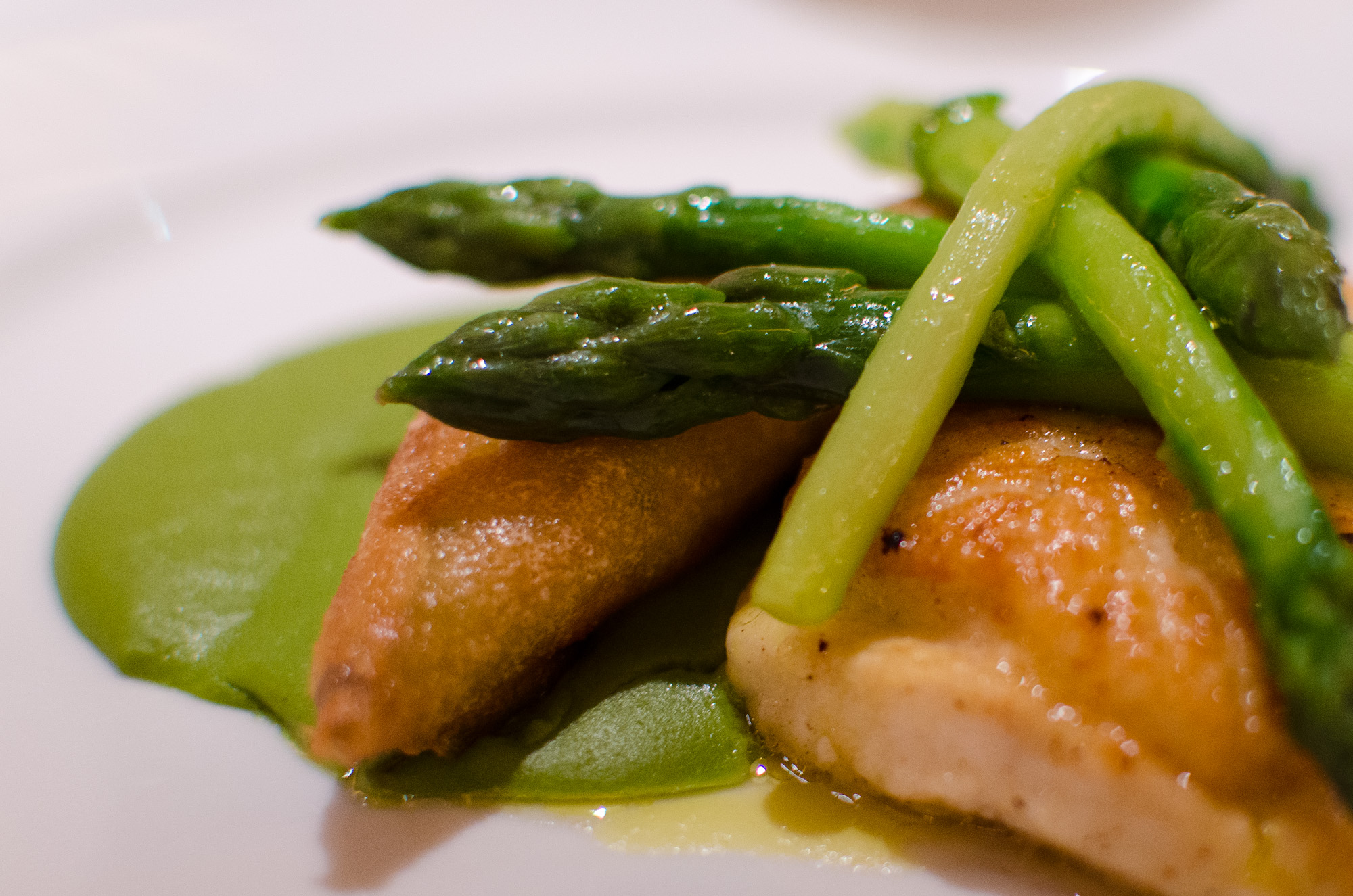
In general I preferred the older wines to the 2011 – not through any fault of the 2011 but simply because I enjoy the complexity of mature wines. However, in the case of the plaice fillet with green curry spice the 2011 Laurentiuslay added something special – and I say that despite instantly having fallen in love with the nose of the 2001 (to me perhaps the most exciting wine of the evening, with the Piesporter Auslese a close second). Both wines are relatively sweet of course and you may find it odd to serve a sweeter wine with a main course. The combination worked surprisingly well though and I particularly enjoyed how the finish of the 2011 made the curry spices explode like a flavour bomb that was almost more intense than the food itself.
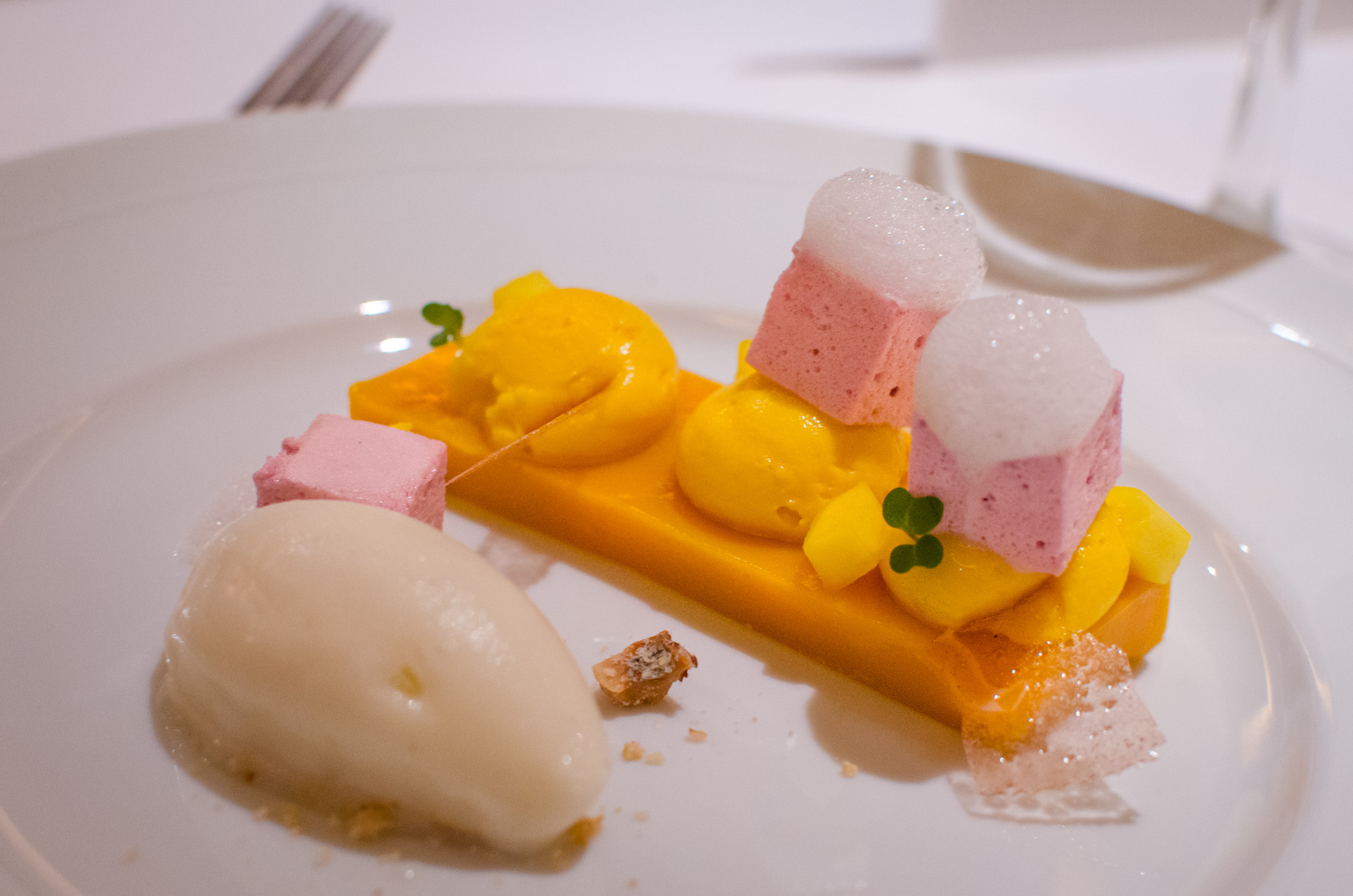
Overall we concluded that the Laurentiuslay wines would have been a better match with the seared foie grass because of the surprisingly intense sweetness of the tart tartin. Sweetness in food calls for sweetness in wine, and Nik explained that he had made the 2001 Laurentiuslay in a sweeter style to balance its acidity. As I still encounter people who believe that sweetness is a sign of low quality I would like to use this occasion for the Wine Rambler ceterum censeo: "Sweetness is your friend." Repeat after me: "Sweetness is your friend."
Excursus #4: good Riesling does not stink of petrol and who or what is Edelfirne?
There is another prejudice that is sometimes associated with Riesling and that is the assumption that old Riesling stinks, indeed that all Riesling smells of petrol and kerosene. Now, it is true that especially older Riesling develops some aromas you might not associate with wine - some remind me a little of paraffin wax for instance. Instead of shaking your head in disgust I would like you to consider seasoning of food. Sometimes you may add a seasoning that seems to contradict the character of the food to enhance it. In a similar way I enjoy the contrast these aromas add to wines that have so much freshness and fruit.

There is a word in German to describe the character of refined aged wine, a word that does not translate into English: Edelfirne. "Edel" means "noble" in German, but these days Edelfirne is less sought after as consumers demand younger, fruit-driven wines. When, over a glass of the 2001 Bockstein, we discussed Edelfirne (which I often associate with paraffin wax) Nik described it as "cold tar soap". He then explained that he considers petrol aromas as a wine fault. Petrol aromas are caused by an organic compound called naphthalene. It is produced from coal tar but also occurs naturally – some termites for instance use naphthalene as a repellent, so it is not something you want in your wine in any noticeable quantity. In Riesling naphthalene occurs when grapes are exposed to excessive heat (which does nasty things to carotene, a key component in photosynthesis). None of the St. Urbans-Hof wines showed it though and overall I was impressed by how well maturity and freshness came together to create moments of pure joy.
Supporting actors: the vineyards
Bringing this back to the topic of land and people we come to the four vineyards of the tasting. The first is the Saarfeilser Marienberg, a St. Urbans-Hof vineyard at the Mosel tributary Saar. As Nik told us it is one of few sites located directly at the river. Its southern exposure together with the sunlight reflected off the water makes it one of the warmest sites in the area. The Saarfeilser wines are fruit-driven and usually made in an off-dry style. The Ockfener Bockstein is located in a side valley of the Saar on a very steep 50° slope. Climate, gravelly slate soil and cool winds make this a great site for aromatic, complex wines. My favourite wine of the night came from the Laurentiuslay, a hill vineyard at the Mosel. It is named after a chapel for St Lawrence (St Laurentius - "lay" means "slate" in the local dialect). Slate is a key concept for understanding Mosel wines. It absorbs some of the excess heat of hot sunny days and radiates it off during the night, moderating temperatures. Riesling from the Laurentiuslay tends to be more full-bodied and concentrated and features mineral and spicy aromatics. Even now I can recall the wonderfully complex and intense nose of the 2001 late harvest – I wish I had a bottle or two in my wardrobe cellar.
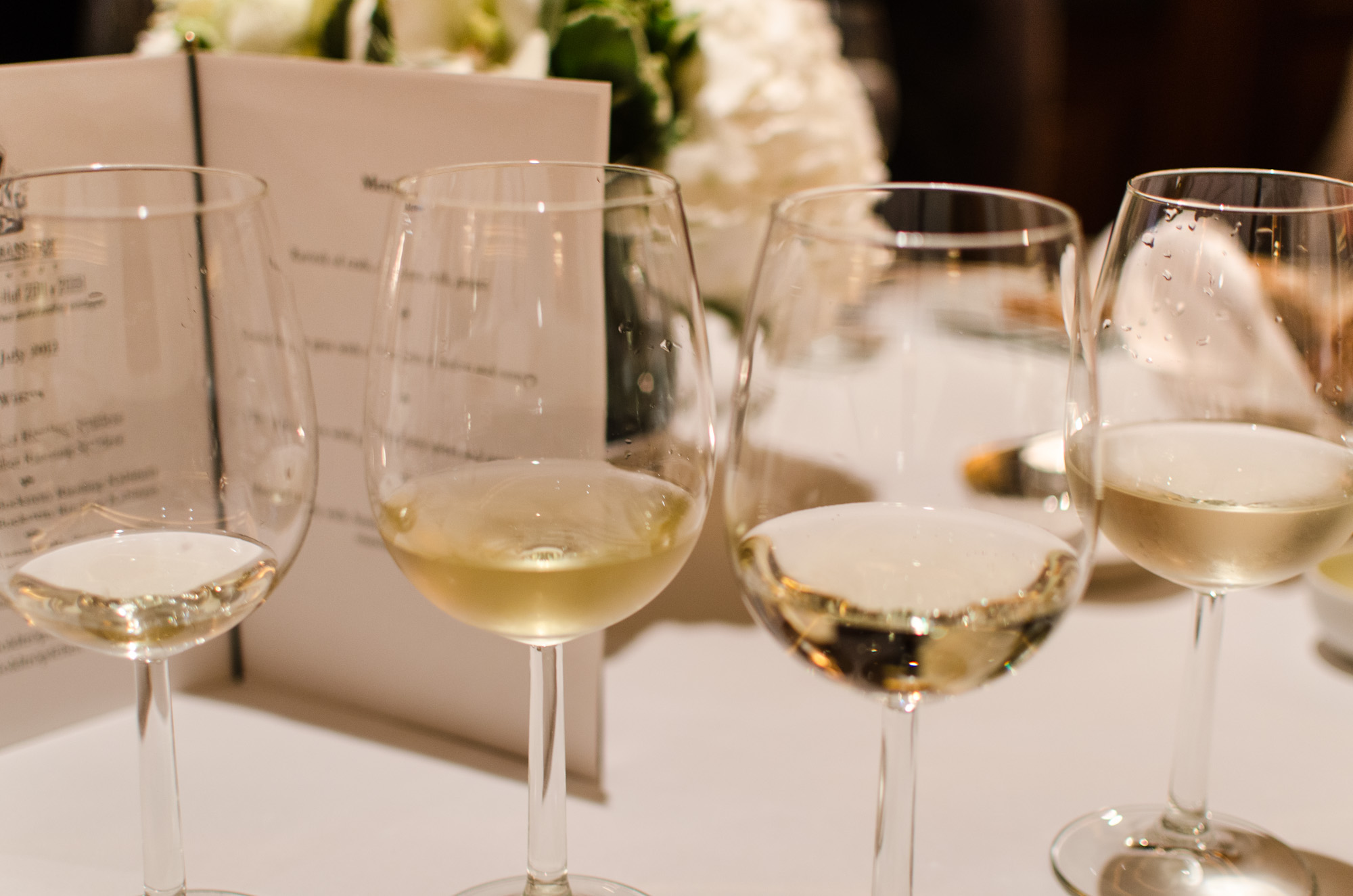
Last, but not least we come to the famous Piesporter Goldtröpfchen. This is among Germany's oldest vineyards and was already highly praised by the Romans. I am a huge fan of the wines from the Goldtröpfchen and find that the name reflects the character only too well: "little drops of gold". Sadly the infamous German wine law has complicated things as it allows all sorts of cheap wines from the area to be labelled as "Piesporter" - many of them are sold to the UK. I can assure you that there are worlds between a Piesporter and a Goldtröpfchen – at the tasting it was especially the long, complex and joyful finish that impressed me.
Searching for the Soul of Riesling, part 3
Goldtröpfchen is a relatively recent addition to the St. Urbans-Hof estate. Nik acquired it by chance when the previous owner rang him one day after having watched Nik's colleagues work in a nearby vineyard. The owner was part of a cooperative and as a result could not get a price for his grapes that would make working this steep site economically viable. However, his heart was attached to the Goldtröpfchen and he wanted it looked after well - in the way he saw Nik's people work the other vineyards. When he inquired whether St. Urbans-Hof was interested Nik agreed without even asking for the price – as you can imagine sites in such a location don't come on the market often. The price, it turns out, was reasonable and the previous owner up to this day feels a sense of ownership and takes great pride in Nik's Goldtröpfchen wines. Every year he comes along to help Nik harvest the grapes.
These are the things that happen when you fall in love with a piece of land and the produce you can bring forth from it. As you go along and work on it, change it, it changes you. The Mosel set Nik on a course to change St. Urbans-Hof. Interestingly his father did not oppose the change but instead supported Nik in building a closer relation between the land and the wines that come from it.
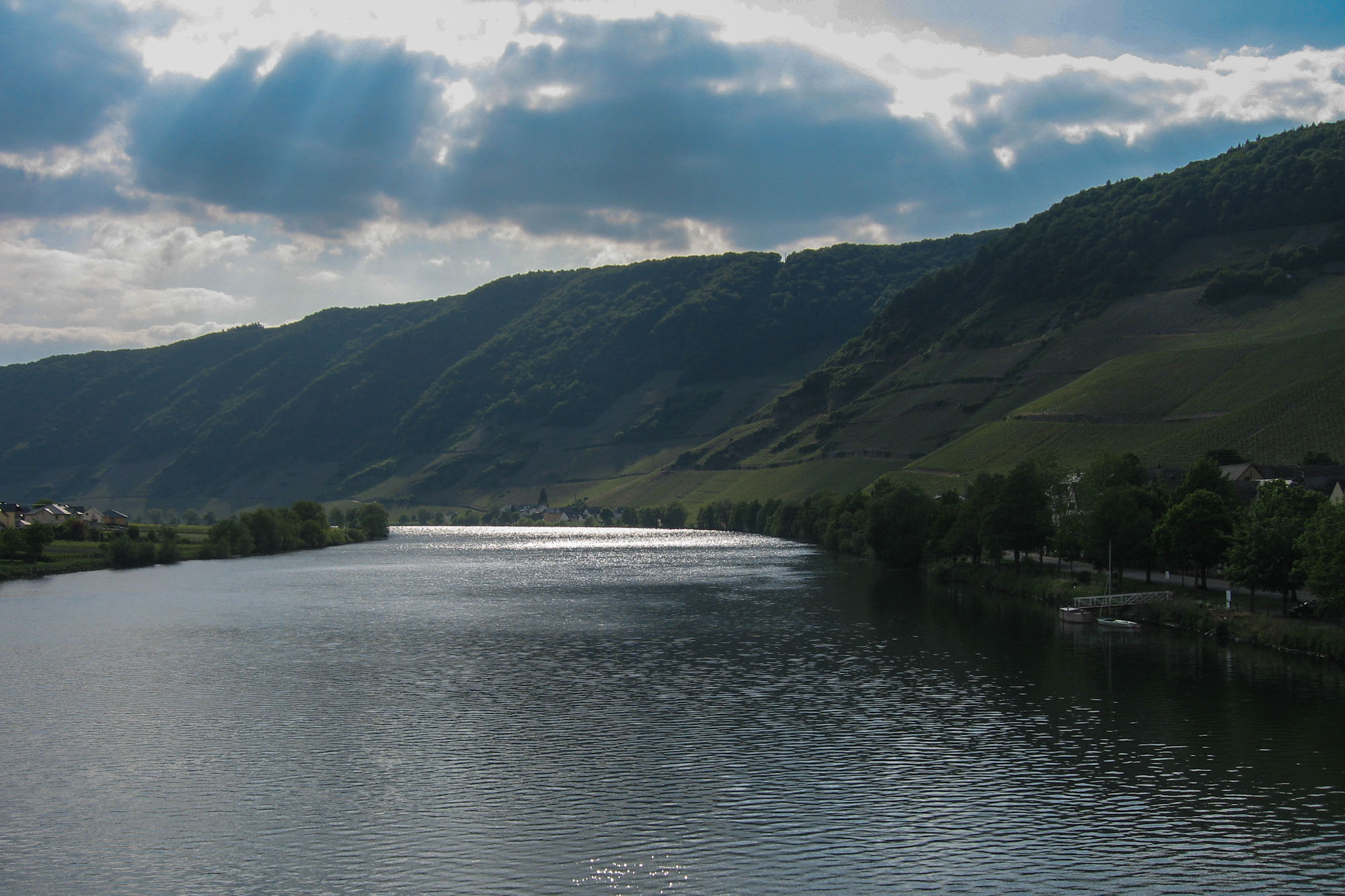
Whether you think there is some magic in all of this I don't know, but I am grateful to have experienced the magic in the Riesling. I could ramble for ever about Mosel wines, but maybe there is another way to convince those of you who have never experienced them: The morning after the tasting – a tasting that went on for hours – I woke up with my head light as a feather, my heart singing with joy and the memory of delight on my sleepy tongue better than many an actual wine. How's that for Riesling magic?

Epic!
Wow, this truly is an epic article! Thanks for this one. I was maybe a bit sad to read that Petrol is considered a fault, as I enjoy it in many Rieslings, but diversity probably is the most important of all. Amazing read! Greets
In reply to Epic! by Alex
petrol aromas
Thanks - it also was an epic tasting! Anyway, there are different opinions with regards to petrol aromas in Riesling. Nik seemed to like the whole range of aromas from paraffin to cold tar soap (as do I), but he sees stronger petrol notes, especially in younger Riesling, as a fault. He did not specify this but it seemed to me he in particular referred to some new world Rieslings planted in fairly hot climates. For me it is, boring as it may sound, mostly a question of balance and the right seasoning. Either way it was interesting to learn something about the chemistry behind it.
2002, 2005 and Chardonnay
Sweetness is your friend. Sweetness is your... Oh, I wasn't done repeating just yet. On the great vintages ending on a 1, I always feel honour-bound to make the case for 2002, my favourite German vintage. While 2001 seems to have been great on the Mosel, but more mixed elsewhere, I have found 2002 reliably excellent all over Germany. On 2005, I am a little more reserved as well, because quite a few 2005s I found to be lacking acidity, for my palate at least. But none of those were St. Urbanshof, it should be added. Did you, by any chance, get to ask Nik about the mystery Chardonnay his estate produced some time in the late 90s? Got a case on eBay a few years ago (remember?), drank it, liked it, never heard of it before or since, never found anything on the Internet about it.
In reply to 2002, 2005 and Chardonnay by Julian
the vintage / the Chardonnay
Ah, the Chardonnay - I must admit I had totally forgotten about that but I will raise the question when I get a chance. You are ahead of me with the 2002 as I don't think I have had a chance to try enough of them to have formed an opinion. For some reason I always seem to encounter 2001 and 2003.
In reply to the vintage / the Chardonnay by torsten
Riesling
Hi Torsten & Julian
I came across your blog today while reading wine-searcher.com. You have a fascinating blog and due to the fact I am learning about wine, but particularly about Riesling I found it very helpful and informative.
I look forward to regularly reading your blog and keeping up with your news about the noble Riesling and also Spatburgunder.
I did have one question though, in your article you mention having Thai cuisine with an off dry Riesling and how it paired quite well. I have a Plafz Riesling Spatlese trocken that I am planning on pairing with Thai cuisine, do you think this will be a good pairing or is it better to pair it with something slightly sweeter?
Interested to hear your thoughts on the matter.
Cheers!
S.M.
In reply to Riesling by S.M.
Riesling and Thai food
Thank you for your comment and your kind words, S.M. - happy to hear you like the Wine Rambler. We are big Riesling fans (this is stating the obvious, but that is a hobby of mine) and it certainly is a fantastic grape variety to explore, especially as it comes in all varieties from bone-dry to super sweet, light, substantial etc. and also as sparkling wine.
Out of those types the standard recommendation for Thai food would be an off-dry Riesling (halbtrocken or feinherb), but that is obviously a wide generalisation as Thai food can be as different as wine. My general recommendation is not to be too concerned with food and wine pairing. Some combinations are excellent and a few won't work at all, but often it is a grey area where both the specific wine and personal preference play an important role. The "objectively" better match does not have to go best with your taste. So depending on the specific Thai dish you are considering an off-dry wine might be better (I like the sweetness with the spice of the food) but I have also paired dry Riesling with spicy, Asian flavours. However, if you are going for really spicy I would suggest a sweeter wine.